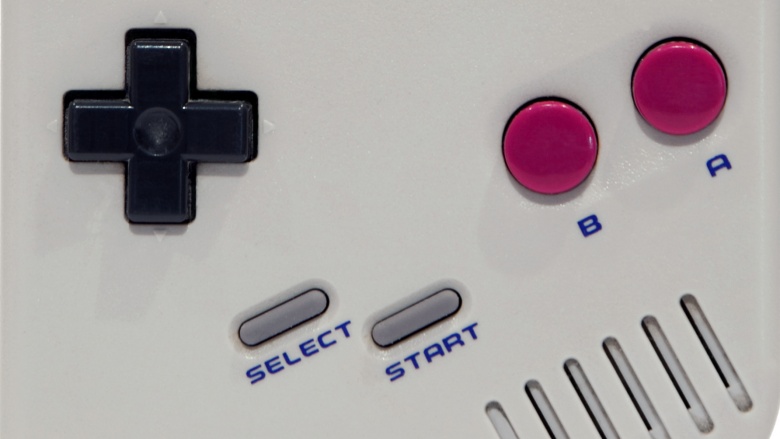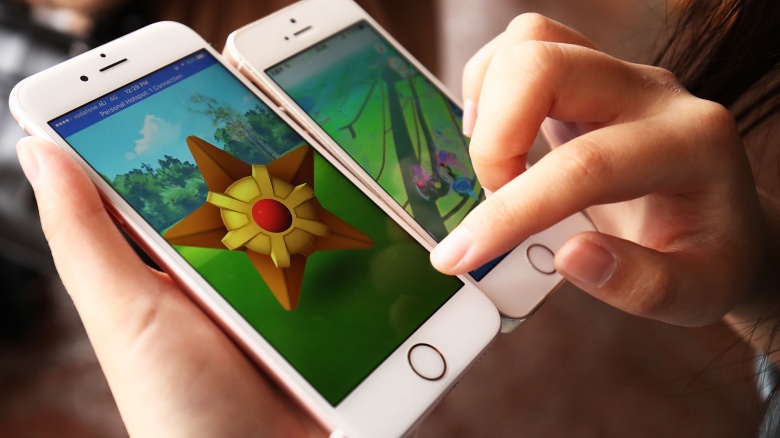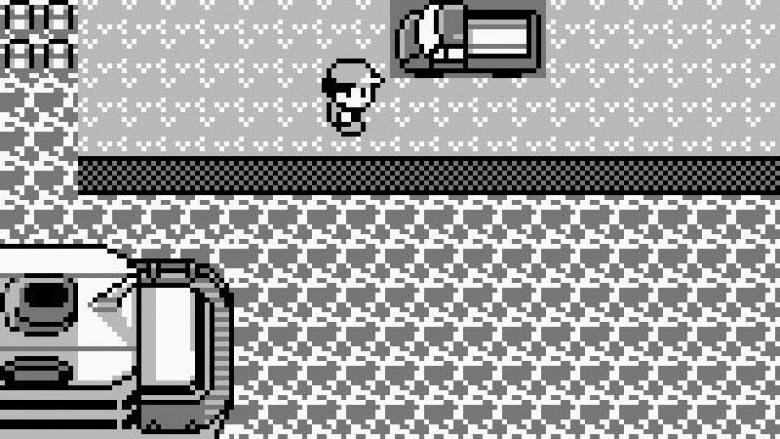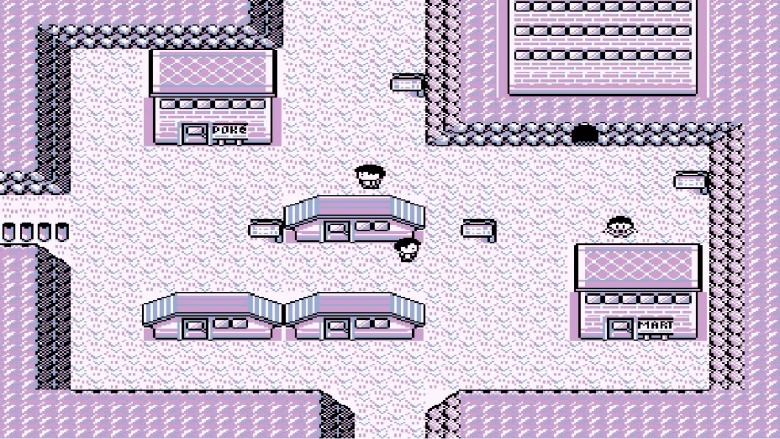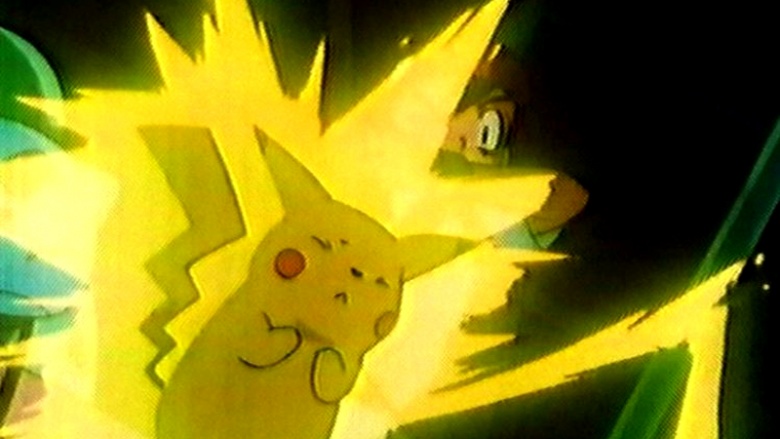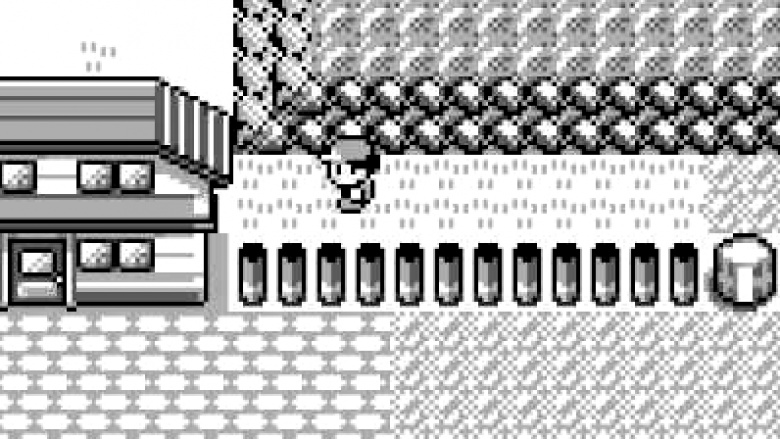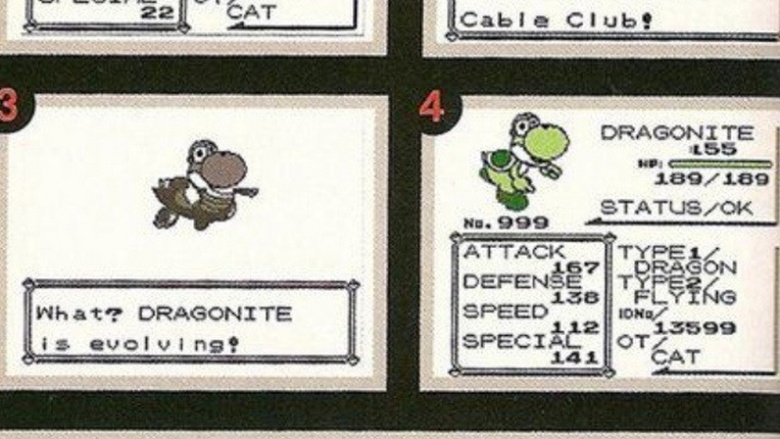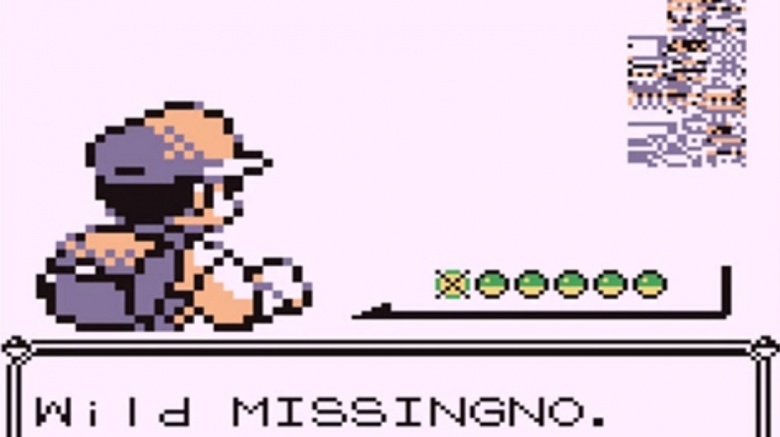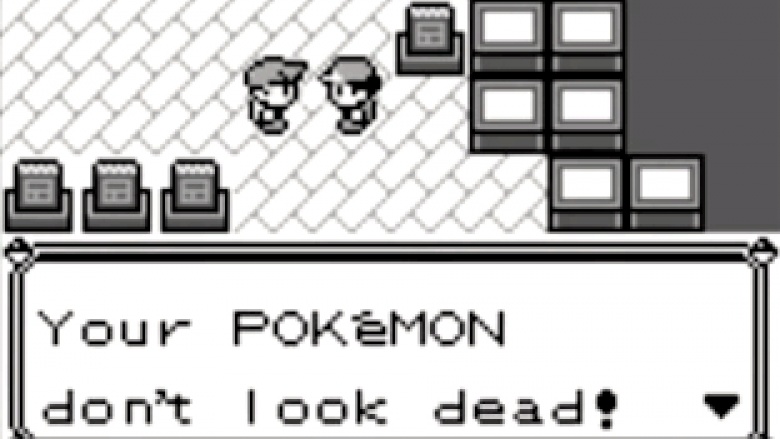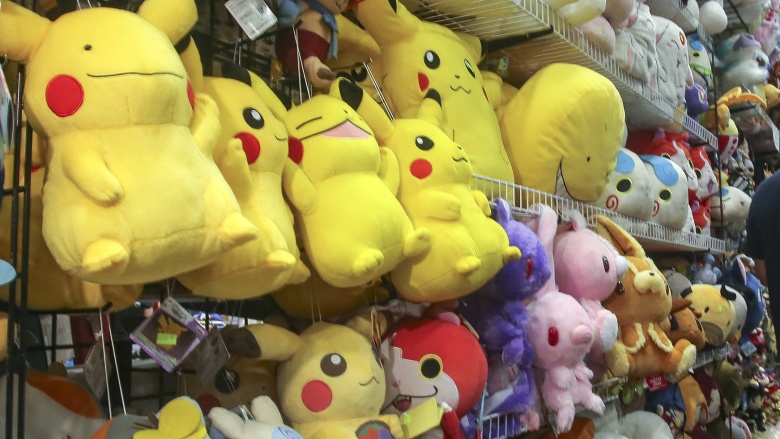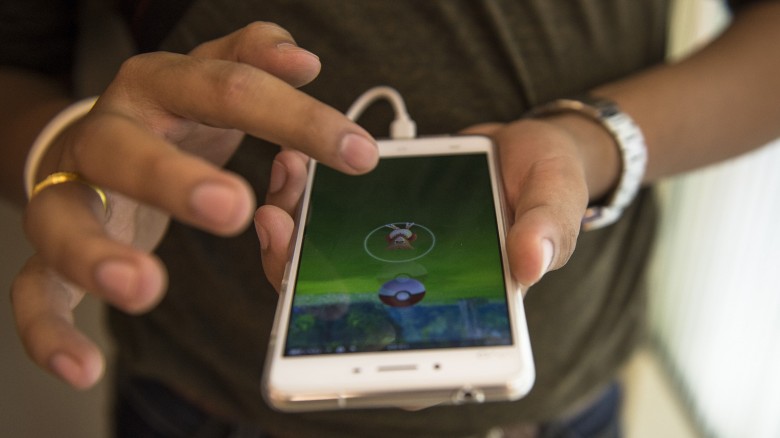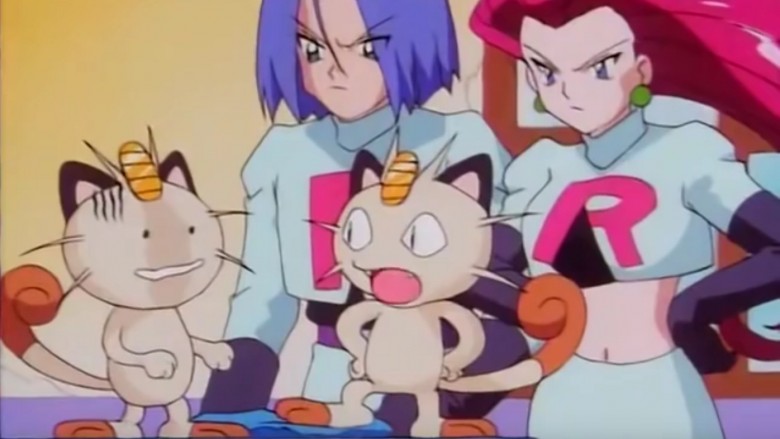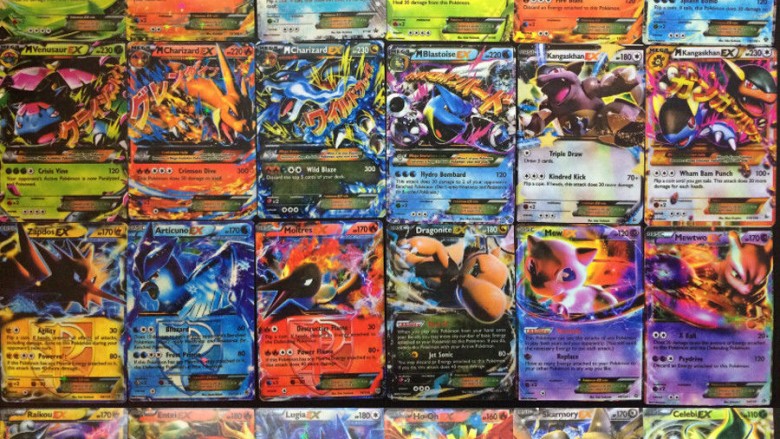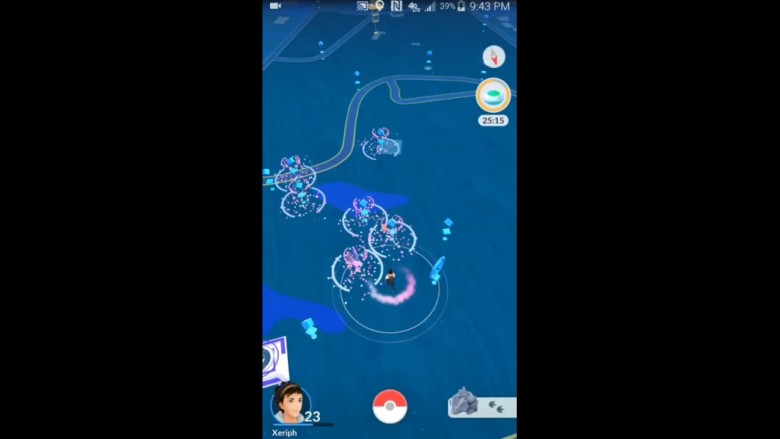False Facts About Pokemon You Always Thought Were True
Pokemon has been around for decades (wait, really?), long enough to inspire playground rumors from multiple generations of fans. Considering the series took hold when most folks merely had dial-up internet (if any at all) urban legends were mostly allowed to thrive unchallenged. But now. it's time to bust 'em all:
Holding down + B is the easiest way to capture a Pokemon
Many fans have found themselves not content with knowing that capturing Pokemon with a Pokeball is largely a random affair. Yes, odds of capture can be improved by using different levels of Pokeball and it's based on the stats of the creature being captured, but players want to feel there is something they can actively do to help. Over the years, many combinations of button-jamming have been suggested, with the most prevalent being a combination of holding the down arrow while pressing button B. More recently, there's the idea that saying a phrase like "GOTCHA" into the game system microphone will help improve the odds.
Unfortunately, there is no proof or statement from the developers confirming that any of these tricks actually work. Keep trying, though. Maybe shout louder?
You can recover Pokeballs In Pokemon GO by tapping them
Pokemon GO was released this past summer, and it changed up the formula of gameplay for fans. The game required players to actually, physically walk around to chase down monsters, and crucial game items could only be acquired through leveling up, in-game purchases, or be found at various Pokestops scattered around the real world. This led to several theories on how to conserve items since they could occasionally be few and far-between, depending on how often you wanted to take a literal hike to restock. Players noticed that tapping a Pokeball that missed its target would cause it to disappear, and they theorized that you could pick them back up. That way, they wouldn't go to waste. Turns out, all that does is spare you the trouble of having to wait for the ball to roll off-screen before you can launch another. A small win, but a win nonetheless.
Pikablu, Mewthree and other "Fakemon" exist
Over the years and largely because of delays between Japanese and American releases, characters could appear in the animated cartoons/films that weren't actually available in the current American game series. Or, sometimes it was mistranslations or jokes that were taken as serious by the fan base. These, and many other reasons, fueled rumors of the group of Pokemon and special creatures usually called "PokeGods" or "Fakemon." Not naming them "Hoaxemon" seems like a missed opportunity, but we don't make the rules.
The first of these was a rumored creature called "Pikablu," suspected to be a special evolution of Pikachu past Raichu. The rumor started with the appearance of what is now known as Marill in the short "Pikachu's Vacation" from the first Pokemon movie. It didn't help that the related Topps trading cards also referred to the Marill with that name "Pikablu." Not knowing the character was exclusive to Pokemon Gold and later games, fans devised all sorts of theories on how to capture it in the currently available Red and Blue.
The first Pokemon movie also spawned theories over a "Mewthree" hidden in the game, all based on a single line of dialog mentioning it. That came from the scientists after the creation of Mewtwo, and the fact that Mewtwo destroyed the lab later in the movie didn't stop the rumor of the non-existent character. Honestly, we wanted this to be real, too. Here's hoping?
Mew can be found hiding under a truck
Mew was the 151st Pokemon, and was originally only available at exclusive "Nintendo Roadshow" events. The idea was that folks who attended these events and downloaded their own Mew could distribute it to others via linked-Gameboy tradeoffs. Unfortunately, it couldn't spread to everybody, so many folks hoped and theorized of other possibilities.
One such theory arose when players discovered they could access some previously unreachable areas in the vicinity of the SS Anne, if they had acquired a Pokemon from another player with the "Surf" skill (which you normally wouldn't have had this early in normal gameplay). In particular, a lone truck on an island accessible only through this trick became the focus of many rumors, the prevailing one being that the highly desirable rare Pokemon Mew was, in fact, inside. As with the other entries in this list, this turned out to be just rumor. On the plus side, you got the ability to "Surf" earlier, and that's something to be proud of.
Lavender Town's music caused people to commit suicide
At this point you are thinking, "Well, of course this one is fake! A game causing people to commit suicide is a horror movie plot and would be an insurmountable public relations disaster for the developers and publisher in the real world!" And you would be right. But there's some interesting aspects to this town, and it's music, in the greater context of the game that could be the reason this particular rumor sticks around so adamantly.
For starters, let's consider the music. It's stark, deliberately atonal and reminiscent of early horror music soundtracks. It's been suspected that the tones are spaced out in a certain way as an experiment in binaural beats, which are a particularly creepy sort of music that seems to literally vibrate your brain. We know, right? Regardless of whether or not your brain is dancing along, the music sets a pervading tone of dread.
The town itself represents a drastic shift away from the tone of the rest of the game. At this point in an otherwise cutesy and playful game, it is revealed that Pokemon are actually capable of dying. Your Pokemon. That you've loved and raised and waited up for at night when they've gone off on their first date... you love them. (We're not here to judge.) That initial shock of that revelation could be why so much fixation is placed on the town. It's not the sort of place you'll forget any time soon, especially when it's scarred your impressionable young mind.
Pokemon Shock Syndrome was real, and a huge deal
This is one of the first on this list that actually has truth to it, but in spite of the sensationalism of it, the issue itself was isolated to one broadcast of one episode. On December 16, 1997 the episode "Electric Soldier Porygon" aired in Japan. The episode takes place inside a virtual reality world. There is a scene where Pikachu uses a lightning attack to disable a bunch of virtual missiles. In order to portray what they thought would be an appropriately cybernetic explosion, the animators included rapid red-blue flashing across the entire background of the screen. This rapid strobe effect caused 685 children across Japan to experience blurred vision, nausea and in some cases seizures that required hospitalization. Most recovered quickly, and only a few were actually diagnosed with epilepsy.
The show was taken off the air for four months while the producers consulted with health professionals to figure out what happened. Nintendo, Pokemon, and children's animation broadcasting related stocks all took hits over the loss in confidence. When the show returned, the first new episode included a public-service announcement about what had been dubbed "Pokemon Shock," and promised viewers that precautions were being taken and it would never occur again. The episode never aired again, and a short clip from the show that appeared in the original opening title sequence was removed. Even the pokemon the episode was named after, Porygon, was never featured in an episode again even though it was Pikachu who was featured in the infamous scene. We'd suggest Porygon needs to seek legal counsel over that wrongful accusation.
You can access Bill's secret garden
Similar to the rumors flying around the random truck you can find by utilizing techniques you narratively shouldn't have, a lot of Pokemon legends center around being able to find your way to normally inaccessible areas in the vicinity of the house of a Pokemon researcher named Bill. Traditionally, the rumors surrounded the area behind the house which is completely inaccessible... at least, traditionally. The only way to get access is to exploit a glitch, and some folks have found a way into a fenced off area next to the house by using "Surf." In either case, folks that have managed to access those areas have never found anything special. If we were programmers, we'd put stuff like that there on purpose.
Yoshi and other Nintendo characters are hidden here and there
The background of this rumor is pretty simple, and it started when actual April Fools posts from Nintendo itself wound up accepted as fact. The Yoshi/Dragonite evolution appeared in the April 1999 issue of Nintendo Power, and an elaborate gameplay sequence to capture Luigi appeared on the official Nintendo website. You can actually see the Nintendo website's retraction of the fake story in the Wayback Machine, but some people won't take "no" for an answer.
MissingNo is a secret Pokemon
This is another entry that is kind of based in fact. You can actually catch this Pokemon, but you might not want to. You won't encounter this one normally; it requires such a specific sequence of events to find you almost have to wonder how anyone found it in the first place. It requires a specific NPC encounter, isolating yourself to a very specific area of the game to look, and even spelling your character's name a certain way.
In short, "MissingNo" isn't actually a real Pokemon, much less a super-secret one. It's called that because the game is saying the Pokemon you found has a "Missing Number." Basically, you found something outside the game's internal database of different monsters. The more in-depth explanation is enough to make your brain hurt (trust us), and folks with experience programming may realize pretty quickly this is a potential disaster waiting to happen, populating your character's Pokedex data with basically random gibberish like this. While on one hand you can find yourself with a Pokemon in your arsenal capable of levels and stats outside normal limitations, you can also find this unstable glitched data corrupting graphics, ruining save files and resetting your Gameboy. Some have found the only way to fix their game is to start over, and no one wants that. Not even for the Pokemon equivalent of the yeti.
You killed Gary's Raticate, you heartless monster
Gary Oak (or Blue) is your character's nemesis through the game Pokemon: Red and Blue. (Spoiler alert!) He always seems to advance slightly faster, is highly competitive and arrogant, and just generally makes himself a constant thorn in the player's side throughout the entire game. He's a jerk, though the lingering possibility that your player might have actually killed one of his Pokemon has haunted players for nearly two decades ... and made them feel a bit guilty.
Unfortunately, this one doesn't have a solid answer, and things certainly do look grim. You do encounter Gary on the SS Anne, where you fight him and he again brings out his by now trademark Raticate. After you defeat him, the next time you see him is in Lavender Town. Yes, the "where you learn Pokemon actually die" town. You fight, and his Raticate is nowhere to be seen.
However, there is also a pretty strong case to be made that you didn't kill the poor thing. One, Gary never mentions it. Every other Pokemon master you encounter in the Lavender Town tower mentions their dead Pokemon by name, whereas Gary mentions that he is there to capture a Ghost Pokemon. Also, Raticate just isn't a Pokemon you throw around much in later levels. It's a good early-game Pokemon, but quickly plateaus in capabilities and becomes less desirable as you encounter higher-level monsters.
Hopefully with that knowledge you can rest easier, you (probably not) Pokemon-murderer.
You can encounter Starter Pokemon in the wild
At the beginning of every Pokemon game you have what are called the "Starters." They're the three Pokemon offered to you by Professor Oak at the beginning of the game, and the one you choose determines strategy for the rest of the game because you never encounter the other starters in the wild. Those poor Pokemon you don't pick for your team can only be found through trading with other players. This has led to decades of rumors about where to encounter "Wild Starters" so certain players (apparently folks with no friends) can actually catch them all.
However, at this point the only game where you encounter starter Pokemon in the wild is Pokemon GO, hopefully while you're encountering some new friends, too.
Height and weight means something in Pokemon GO
One of the more curious additions in Pokemon GO is how each Pokemon now has a listed height and weight. Being random, they can turn out pretty absurd when you attempt to picture them physically. You could wind up with a palm-sized Dragon Pokemon, a Bird Pokemon the size of a beach ball, or a Mouse Pokemon the size of a refrigerator.
There have been a lot of theories of what these stats mean (besides there being something in the Niantic water). Some have suggested it may affect Combat Power, Hit Points, or that it may make them faster in battle. Point is, these weird stats have to mean something, right? Not quite — Niantic has confirmed nothing of the sort, and for every theory going around, there's another asserting the exact opposite. In short, they're almost certainly useless bit of trivial data.
The only thing we know for sure is that some achievement medals in the game are awarded for collecting Pokemon above and below certain sizes. In particular, you want to collect larger Magikarps and smaller Rattatas .. which really just sounds like an excuse to keep catching two of the most useless Pokemon in existence, but that's none of our business.
You could find Ditto in Pokemon GO from the start
Ditto is a very strange first-gen Pokemon that players wondered from the very beginning how and if it would ever appear at all in Pokemon GO. Its very being (change into other Pokemon) doesn't necessarily translate well to the structure of Pokemon GO, which led to all sorts of ideas on what it would do and how to catch it.
Players have been clamoring for this chewed-bubblegum-looking oddball since the original release. Because some people are jerks, they've either gloated over what seems to have been accidental glitches, or just plain made up their catching a Ditto — because some people are masochistic, they've tried nearly every bonkers possible idea to coax Ditto out of hiding. Poking, prodding, changing character names — all sorts of nonsense. There was even a rumor going around that you can tell a Pokemon is a Ditto, because it has Ditto's dumb squiggle face instead of the actual Pokemon face. This is all crap, and none of it is true.
Now, Ditto actually is in the game, but only as of November 2016, and you find one by obsessively catching what amounts to be garbage Pokemon over and over until you find one. In short: you want a Ditto? You gotta grind. Ditto has been confirmed hiding as Zubats, Rattatas, Pidgeys, and even the occasional Magikarp. With the recent 2nd Gen upgrade, which brought on board a bunch of new garbage Pokemon, Ditto has been showing up again. Among the 2nd Gen Pokemon: Hoothoots, Yanmas, Sentrets, and the occasional Spinarak seem to be the culprits. You might recognize these as all the new Pokemon you're already sick of.
You can find Shiny Pokemon in Pokemon GO
Some big news happened around the time of the Thanksgiving holiday-era upgrade in Pokemon GO. Dataminers had poked around in the game code and got everyone's hopes up about Shiny Pokemon. Unfortunately, that wasn't to be, no matter how often and loudly people insist that it is.
People do have a pretty good idea of how they will work, however, should we ever get them. They're gonna be collectible reskins, which isn't some sort of Ed Gein reference, but simply means they're the same Pokemon, except with a different character model. Think Santa Hat Pikachu or Party Hat Pikachu or Reservoir Dogs Pikachu (we may have made one of those up).
Dataminers again made an announcement regarding the February 2017 Gen 2 introduction, saying no really, this time we will have Shiny Pokemon. They say the rate of finding Shiny Pokemon is 1-in-8196 — if true, that would be a pretty disastrous design choice for a game getting increasingly desperate for player interaction. Have you caught 8000 Pokemon? Unless you caught 35 Pokemon every single day since the game's release, that's unlikely. And that would just be to having a fighting chance to get one single Shiny Pokemon. That completely ridiculous potential success rate for an otherwise unremarkable catch, plus the fact that there are still no confirmed captures, makes us think the dataminers are either doing some serious cover-your-butt maneuvers, or just trolling.
Pokemon GO's tracking meter pulse means something
Tracking down Pokemon in Pokemon GO was an infuriating disaster through many of the early iterations. There was a "footstep" gauge that gave you an idea how close one was, whatever the green blowing grass was supposed to mean (SPOILER: it means nothing), and then there was an occasional pulse that the tracking gauge gave off.
Over at Forbes, a columnist there was really convinced that the tracking meter pulse meant something and wrote a whole article about it. The article went viral, with over 350,000 views, but every word of it was useless, because the writer was completely full of crap. Turns out, the pulse just represented a GPS update re-configuring your position in relation to the Pokemon hiding nearby. Oh.
Later updates have changed the tracking feature entirely, focusing entirely on Poke-Stop-spawned Pokemon in your area and dropping more-localized sightings. If you live in an area where Pokestops are few and far between, that's a bummer but, given the quality of the old tracking model, you were pretty much better off just walking around until you tripped over a Dratini anyways, for all the good tracking did you.

